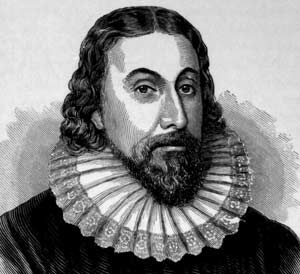Essay -- A Spoon Full of Fiction: Imagination as Mitigator in The History(s) of Love
A
Spoon Full of Fiction: Imagination as Mitigator in The History(s) of Love
Nicole Krauss's
novel The History of Love is filled with grave themes of societal and
personal trauma. Its protagonists have experienced varieties of losses: Leopold
Gursky is a holocaust survivor who has lost his mother and siblings, the love
of his life, and his child to the Holocaust; Alma and Bird Singer have lost their
father to cancer and their mother to grief. Despite these sober subjects, The
History of Love is written with whimsy, wonder, and imagination. Through the
original Alma, Gursky's lover, Nicole Krauss proposes her own literary aesthetic.
Her ideas of literature are reflected both in the History of Love as
well as the book-within-a-book of the same title.
Writing is
central to Leo's life. Alma, his beloved, is central in shaping his literary
style. His first attempt at a novel results in a heavily realistic work, too
realistic for Alma's taste. When he showed it to her, "she just shrugged
and said she liked it better when I made things up". This prompts Leo to
write a second book, which is excessively imaginative: "I filled it with
men who grew wings, and trees with their roots growing into the sky, people who
forgot their own names and people who couldn't forget anything" (342).
Alma is still not satisfied: "… She said maybe I shouldn't make up everything,
because that made it hard to believe anything" (342).
Alma's literary
advice suggests a blend of realism and fiction that Leo, to whom Alma's opinion
is supreme, adopts when he writes the book-within-a-book, The History of
Love. Furthermore, her criticism supplies Leo with tools to deal with his
trauma-ridden life. Leo fills the inner novel with elements of historical
accuracy as well as fantasy, which reads like a quirky chimera of a history
textbook and a love poem, hiding beneath its surface extreme pain. For instance,
Chapter 14 of Gursky's History is titled "The Age of String".
Evocative of the actual archeological periods of the Stone Age, the Bronze Age
and the Iron Age, the chapter describes a time "when it wasn't uncommon to
use a piece of string to guide words that otherwise might falter on the way to
their destinations" (2179). Alma would have approved: the tone is factual,
but the content is playful. Other times, Gursky mitigates the pain of trauma
with colorful imagery: "the practice of attaching cups to the end of
strings… was started by a man who held the end of a string that was unraveled
across the ocean by a girl who left for America" (2179). The girl, of
course, is Alma, and her immigration to America scarred Leo for the rest of his
life; but instead of approaching the traumatic event with the sobriety it
intuitively deserves, Leo counters the loss with colorful, vivid imagery.
Alma's literary criticism has succeeded: the book, in its Spanish translation,
is published, and well-loved enough that years later a girl in New York is
named after its central character.
It is not only
the book-within-a-book, however, that subscribes to Alma's preferred blend of
realism and whimsy. The entirety of Krauss's novel is steeped in somber
thematic. Just like the book-within-a-book, trauma and loss are made bearable in
the novel proper with the help of humor and whimsy. When Bird is distressed by
his lack of memories of their father, his sister Alma invents anecdotes about him,
telling Bird he "could do the Heimlich… and fly a hovercraft" (1967).
Perhaps the most moving fabrication in the book is Leo's friendship with his
childhood friend Bruno: only at the end of the novel, throughout which he is
treated as an absolutely real character, we find that Leo has only imagined
their mutual love and support all of these years, and that Bruno has in fact been
dead since 1941. Instead of being haunted by his friend's memory, Leo harnesses
it to alleviate his loneliness.
More than
simply literary theory, then, this blend of fact and fiction becomes a
philosophy of life for the characters of The History of Love. "I
can barely tell the difference between what is real and what I believe," says
Leo (4239), and this sentiment is echoed throughout the work. Bird copes with the
harsh facts of his reality by imagining that he is the potential messiah. Leo
too blurs the boundary between fancy and fact in order to empower his reality.
"At times," he thinks, "I believed that the last page of my book
and the last page of my life were one and the same, that when my book ended I'd
end" (376). And indeed, the last page of both Histories features
Leo Gursky's obituary. This structural identity constitutes a final blend of
fact and fiction, art, and life: both books, as well as the lives of their
characters, conflate into one. Leo, as an old man, once again meets a young Alma
who is eager to know him. Uncertain whether she is real or not, the encounter
is nonetheless powerful enough to allow Leo the closure he needs – the closure
to write the final page of his book, and also, it seems, the closure to his
very life. By embracing his love for literature through the philosophy of his
beloved, Leo manages to ease the great pain he has experienced, and leave his
final, affirming mark on the literary, the fictional, and the real.









Comments
Post a Comment
Hey friend! 🌈 I can't help with your assignments but maybe other readers can. Good luck! 🤞